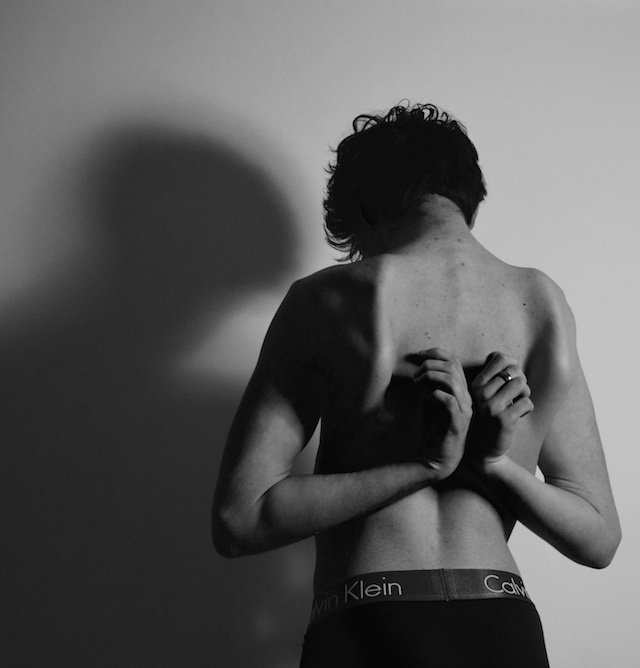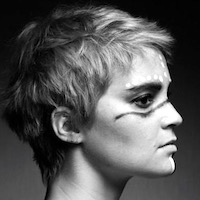
We live in a community of blurred lines.
Men are feminine, women are masculine, and the labels don’t actually mean anything, and in many cases are taken away completely. Relationships are open and closed: poly, mono, and uni. (No, I don’t know what it means, either).
We are hippies and we are not. We are thinkers and we are feelers. It’s a beautiful, mixed up place to be—for the most part.
But there is one thing I feel is important to talk about and define, and that’s the distinction between a healthy lifestyle and an eating disorder.
Growing up, there was a pretty distinct line between the two for me.
When I was 12, I had a healthy lifestyle. When I was 13, I had an eating disorder.
It wasn’t a gradual fade, as far as I can remember, unlike in my 20s when I slowly faded into anorexia.
No.
In eighth grade I decided to start throwing up my food.
Bulimia is not a subtle eating disorder. You can’t really disguise it as “healthy eating,” and you can’t pretend you think it’s normal. There’s nothing normal-feeling about it.
But, this is not the blurred area I refer to. That happened later.
As I got older, I became less and less healthy. I fell deeper into my addiction. My parents finally made me get help. I was in my senior year of high school and started an outpatient program for eating disorders.
I was in it with one other girl and our therapist. She was anorexic, and so, so thin. She didn’t realize anything was wrong for a long time. Anorexia is sneaky and can be “normalized.”
I attended therapy twice a week for what seems like many months. Looking back, though, it could have been just one or two. It was there that I first learned how little the eating disorder had to do with my body size, and more to do with staying numb. It was there I learned it was a survival mechanism—possibly the only way I did survive. And it was there that I was first introduced to meditation.
Five years later…
I’d been meditating consistently. I’d become part of a healthier community—I’d quit drinking, stopped smoking, taken on the healthiest of eating habits. I was rocking this whole mindful living thing.
But, my body started sending me messages—subtle at first and easy to ignore. I started getting anxious and dizzy. I got leg cramps after working out, I wasn’t sleeping well, my brain was fuzzy, and I hadn’t had a period in years.
It wasn’t until an old high school acquaintance sent me this message on Facebook that I realized what was going on:
“Hey Natalie, I know I don’t know you very well but some pictures of you came up on my newsfeed. You look really skinny and I don’t want to make any judgements without knowing for sure, but you look sick. I know that lots of things can cause weight loss but I am in recovery from anorexia—so when I see it, it worries me…”
Cool how Facebook stores your messages forever, huh?
I wasn’t living a healthy lifestyle—I was anorexic.
Unlike bulimia, anorexia was able to sneak up on me and stay hidden for a long time disguised as a “healthy lifestyle.” What started as working out and eating healthy, organic foods, devolved into working out excessively and being obsessed with “healthy eating” (orthorexia) and finally, into restricting that healthy eating to 800 calories a day.
That message was the beginning of my wising up. I realized meditating alone couldn’t save me; it was time to start feeling the pain underneath it all. And eating. And allowing myself to gain weight. And feeling the pain of that, too.
I had to let go of the control the eating disorder had given me, a safety blanket for over 10 years, and realize it was not in my control. None of it was. And, slowly but surely, develop a healthier relationship with my body. I’m still working on this.
Now, at 30 years old, I am healthy. I am messed up. I am better. I am worse. I am happy. I am sad. I’m allowing myself to feel it all. Which is why the superpower that all those years of disordered eating has given me, hurts so much.
You see, I can see this stuff everywhere.
I have friends who live on nothing but fruit. Some have cut out all fruit and carbs completely. I sh*t you not, a friend of mine ate a stick of butter as a snack the other night, as a way to burn fat and gain energy.
And that’s just in my community.
From Cosmo to healthy living magazines, we are inundated with one message: To be thin is to be loved. Stories of weight loss are right there next to introductions to meditation. It’s become normal to read, “eat healthy,” “eat less,” “lose weight, look great,” that it’s no wonder we can’t see it.
But we can learn to—and it doesn’t have to take 15 years of disordered eating to get there. It takes awareness. Here are some simple tips that may help:
Ourselves. If we are living healthy lifestyles, good for us! But if we’re living “healthy lifestyles,” we might need to slow down and reevaluate.
Some clues that your eating habits are disordered rather than healthy are:
Eating (or not eating) to numb or control emotion, counting calories, restricting whole food groups (unless there is a food sensitivity or allergy), beating ourselves up about our weight or food intake, dizziness, hair loss, consistent muscle cramps after excessive working out, loss of menstrual cycle, and dieting and body image getting in the way of our relationships and lives.
Others. Please, do not feed into an eating disorder. I repeat, please do not feed into an eating disorder. If a friend who does not need to lose weight does, or you notice they’re not eating enough—don’t compliment their appearance or drive. One more time in case you missed it: Please do not feed into an eating disorder!
The community. Ask for support. If you’re struggling with body image and food, you’re not the only one.
It’s time we start waking up and taking ownership of the part we’re playing in this whole mess, because the eating disorders masquerading as healthy lifestyles are keeping us numb, small, weak, and competitive. They’re feeding into a patriarchal system. And girl, I know you do not want to do that.
It’s time to wake up and start feeding our bodies.
It’s time to start taking up space.
~
Author: Natalie Grigson
Image: Emily Morter/Unsplash
Editor: Lieselle Davidson








Read 1 comment and reply